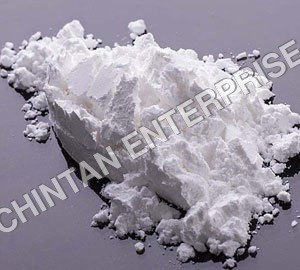HPLC Buffer Salts and Ion Pair Reagents
Product Details:
- Grade Chemical Grade
- Type Hospital Lab Chemicals
- Appearance Liquid
- Purity(%) 99%
- Click to View more
HPLC Buffer Salts and Ion Pair Reagents
- 1 Ton
- 305 INR/Milliliter
HPLC Buffer Salts and Ion Pair Reagents
- Liquid
- Hospital Lab Chemicals
- 99%
- Chemical Grade
HPLC Buffer Salts and Ion Pair Reagents
- Cash Advance (CA), Cash in Advance (CID)
- 1 Ton Per Week
- 1 Week
- All India
Product Description
HPLC buffer salts and ion pair reagents are synthetic substances utilized in Elite Execution Fluid Chromatography to improve the separation and detection of analytes in a fluid example. Buffer salts assist with keeping a steady pH in the portable stage, while ion pair reagents are added to work on the retention and resolution of certain analytes by shaping ion pairs with them.
Phosphates & Acetate HPLC buffer salts
- Accurate pH ensures consistency in retention time
- Free from insoluble matter, gives long column shelf life & trouble free pump operation
- Solution pH is tested with NIST traceable buffers
Ion pair reagents
- Tested for UV absorbance at low wavelength to ensure highest transmittance in working wavelength
- High sensitivity & low background noise to ensure high response at low concentration
- Reagents are available in anhydrous and monohydrate form
- A wide range of Alkyl sulphonates (C4 to C8) & Quaternary amines suitable for IPC in pharmaceutical research and Biological samples
FAQs of HPLC Buffer Salts and Ion Pair Reagents:
Q: Why are buffer salts utilized in HPLC?
A: Buffer salts are utilized in HPLC to keep a consistent and controlled pH in the versatile stage. This is urgent for guaranteeing reproducible chromatographic outcomes and streamlining the separation of analytes, particularly those delicate to pH changes.
Q: What kinds of buffer salts are regularly utilized in HPLC?
A: Typical buffer salts utilized in HPLC incorporate phosphate salts (e.g., potassium dihydrogen phosphate), acetic acid derivation salts (e.g., sodium acetic acid derivation), and citrate salts (e.g., sodium citrate). The decision of buffer relies upon the ideal pH range and the similarity with the analytes being isolated.
Q: How do ion pair reagents work in HPLC?
A: Ion pair reagents are added to the portable stage in HPLC to frame ion pairs with analytes, particularly those with charged functional gatherings. This interaction can work on the retention and separation of these analytes on the chromatographic segment, prompting upgraded resolution.
Q: What are a few instances of ion pair reagents utilized in HPLC?
A: Instances of ion pair reagents incorporate alkylamines like triethylamine (TEA) or tetrabutylammonium salts. These reagents regularly contain both hydrophobic and ionic moieties, permitting them to associate with analytes and work with their retention on the section.
Q: When should ion pair reagents be utilized in HPLC examination?
A: Ion pair reagents are especially valuable while managing polar and charged analytes that don't hold well on standard switched stage HPLC segments. They are frequently utilized to work on the retention, resolution, and awareness of such mixtures.

Price:
- 50
- 100
- 200
- 250
- 500
- 1000+
Other Products in 'Laboratory Chemicals' category
 |
CHINTAN ENTERPRISE
All Rights Reserved.(Terms of Use) Developed and Managed by Infocom Network Private Limited. |
 English
English Spanish
Spanish French
French German
German Italian
Italian Chinese (Simplified)
Chinese (Simplified) Japanese
Japanese Korean
Korean Arabic
Arabic Portuguese
Portuguese












